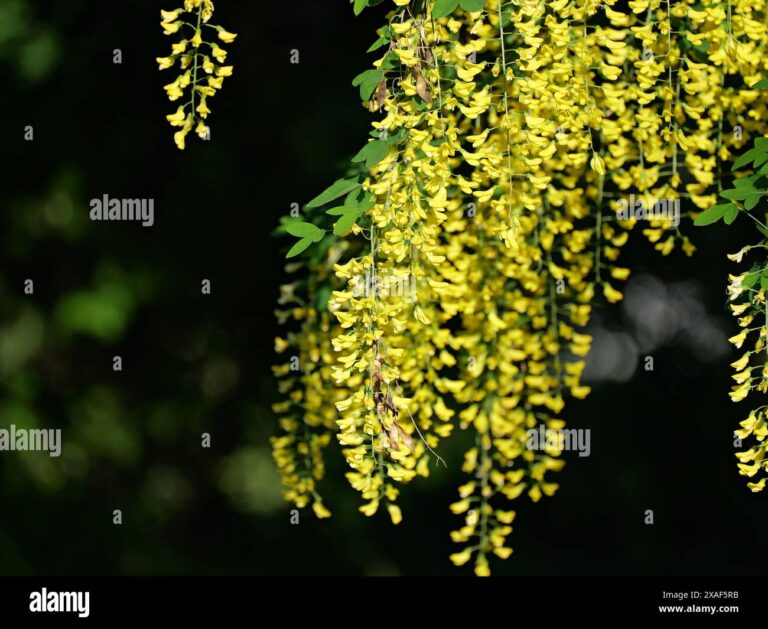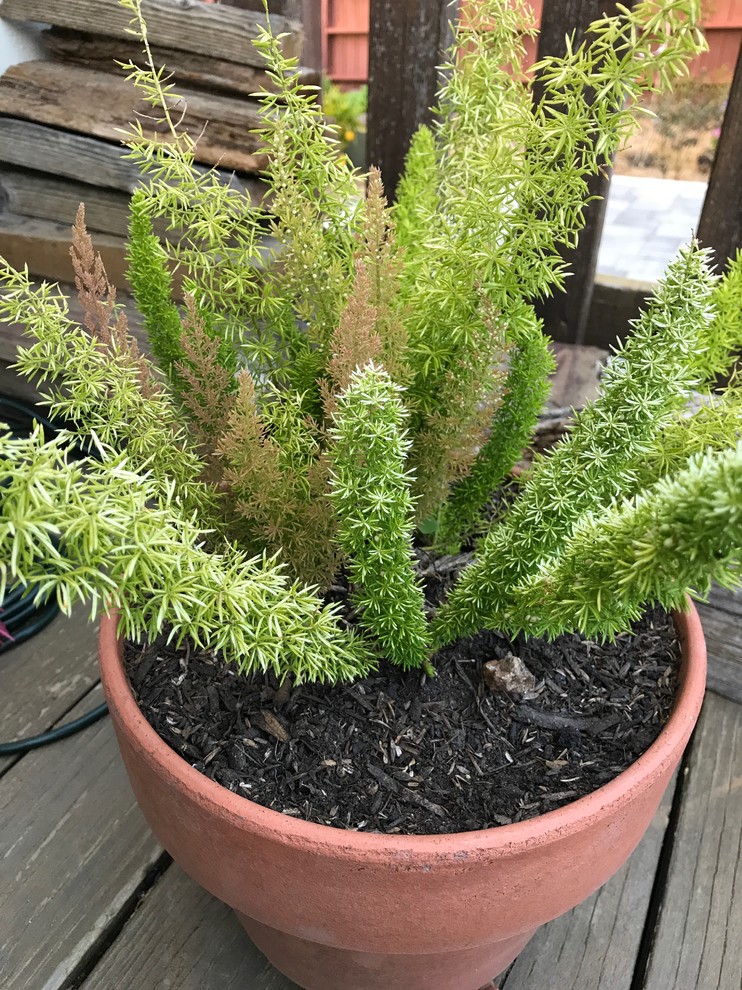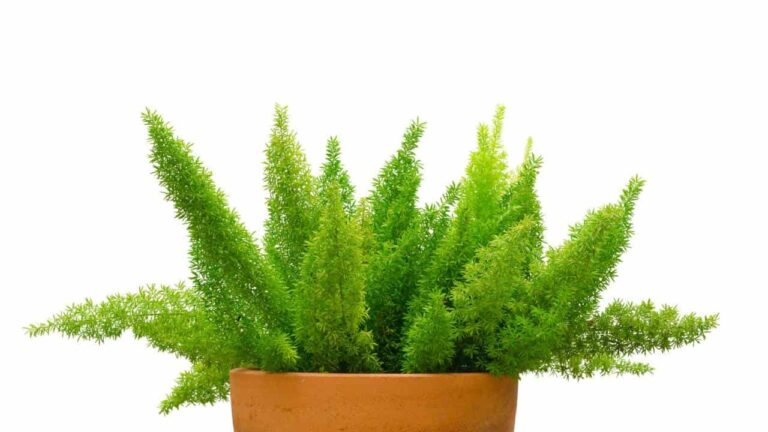Growing Ferns Indoors
Understanding Ferns
Ferns, one of the oldest groups of living things on earth, date back over 300 million years and currently include more than 10,000 living species (Brooklyn Botanic Garden). These non-flowering houseplants are primarily grown for their diverse and attractive foliage. Key varieties typically grown indoors include the Caterpillar Fern, Lacy Rabbit’s Foot Fern, Bird’s Nest Fern, Japanese Holly Fern, and Button Fern.
Ferns are vascular plants that reproduce by spores rather than seeds. Native to tropical rainforests, they thrive in environments with indirect sunlight, moist soil, and high humidity (UConn Home and Garden Education Center). Starting with some common and easily adaptable species can be a good way to begin growing ferns as houseplants.
For more information on specific care requirements, read our article on fern plant care.
Benefits of Growing Ferns
Growing ferns indoors offers several benefits beyond their visual appeal:
- Air Purification: Ferns are known to improve air quality by removing pollutants and releasing oxygen, making your indoor environment healthier.
- Humidity Control: Ferns release moisture into the air, which can help maintain a comfortable humidity level indoors.
- Therapeutic Value: Interacting with plants, including ferns, can reduce stress and enhance mood.
- Decorative Element: With their lush foliage, ferns add a touch of nature and elegance to any indoor space.
| Benefit | Explanation |
|---|---|
| Air Purification | Removes pollutants and improves air quality. |
| Humidity Control | Adds moisture to the air, maintaining humidity levels. |
| Therapeutic Value | Helps reduce stress and improve mood. |
| Decorative Element | Enhances indoor décor with lush, green foliage. |
Ferns also require relatively simple care, which makes them an ideal choice for both novice and experienced gardeners. To maximize these benefits, ensure proper placement and maintain the right conditions for your fern plant in a pot.
For specific light and temperature needs, refer to our guide on fern plant light requirements and fern plant temperature tolerance. If you need tips on dealing with common issues or repotting, see fern plant propagation and fern plant dying.
Popular Indoor Fern Varieties
When it comes to growing ferns indoors, selecting the right variety is crucial for a thriving fern plant in a pot. Here are three popular indoor fern varieties that are both beautiful and manageable for home gardeners.
Boston Fern
Boston Fern (Nephrolepis exaltata) is a traditional houseplant that was incredibly popular in the 1970s. It is known for its lush, dense foliage and can grow to around 2 to 3 feet tall and wide. Characterized by its dissected, lance-shaped green leaves, this tropical evergreen fern has a uniform mounding habit. The Boston Fern thrives in bright indirect light indoors and benefits from partial sun to shade when displayed outdoors during summer.
| Feature | Description |
|---|---|
| Height | 2 to 3 feet |
| Light Requirements | Bright indirect light |
| Outdoor Light Requirements | Partial sun to shade |
| Growth Habit | Mounding |
| Popularity | Victorian era, 1970s |
For more on caring for this lush plant, visit our guide on fern plant care.
Staghorn Fern
Staghorn Ferns (Platycerium spp.) are epiphytic ferns known for their unique appearance, featuring shield-like basal fronds and green, horn-shaped fronds of various colors (Epic Gardening). These ferns grow from short rhizomes and are often mounted on wooden boards attached to walls, making them an eye-catching addition to any indoor space.
| Feature | Description |
|---|---|
| Growth Form | Epiphytic, rhizomes |
| Fronds | Shield-like basal, horn-shaped |
| Mounting | Often mounted on wooden boards |
| Light Requirements | Bright, indirect light |
| Unique Characteristics | Ideal for wall mounting |
Learn more about the unique care needs of Staghorn Ferns by visiting our article on fern plant light requirements.
Blue Star Fern
The Blue Star Fern (Phlebodium aureum) exhibits a mounding and arching habit, growing to about 10 to 14 inches tall and 16 inches wide. This fern thrives in low to medium light conditions and features a blue-green patina on its leaves as they age (Garden Design). As an epiphyte, it has fuzzy, creeping rhizomes emerging from the base, which makes it well-suited for tabletop decoration in offices or humid areas like bathrooms.
| Feature | Description |
|---|---|
| Height | 10 to 14 inches |
| Spread | 16 inches |
| Light Requirements | Low to medium light |
| Growth Habit | Mounding, arching |
| Special Characteristics | Blue-green patina on leaves |
For tips on managing indoor humidity and other fern essentials, explore our article on fern plant watering.
Choosing the right variety and understanding their specific care requirements ensures that your fern plant in a pot will thrive and add a touch of nature to your indoor space.
Care Tips for Indoor Ferns
To thrive, an indoor fern plant in a pot requires proper care and attention. This section outlines essential tips for maintaining the health and vibrancy of your ferns indoors.
Light and Temperature Requirements
Fern plants generally prefer indirect light, as direct sunlight can scorch their delicate fronds. Placement near a north or east-facing window is ideal for most fern varieties (Brooklyn Botanic Garden). Here are the typical light and temperature needs for indoor ferns:
| Light Requirement | Temperature Range |
|---|---|
| Indirect Light | 60-75°F (15-24°C) |
For specific light requirements of various ferns, visit our page on fern plant light requirements. Maintaining consistent temperatures is crucial. Avoid placing ferns near drafty windows or heat sources that could cause temperature fluctuations. For more details on temperature tolerance, check out fern plant temperature tolerance.
Watering and Humidity Needs
Watering is perhaps the most critical aspect of fern care. Fern plants enjoy consistently moist soil but dislike waterlogged conditions. Water your fern when the top inch of soil feels dry. Humidity is another important factor. Ferns flourish in environments with high moisture levels, ideally between 40-50% relative humidity (Brooklyn Botanic Garden).
| Requirement | Ideal Condition |
|---|---|
| Soil Moisture | Moist, well-drained |
| Humidity | 40-50% |
In overly dry environments, consider using a humidifier or placing a tray of water near the fern to maintain adequate humidity. For tips on fern plant watering, refer to our detailed guide.
Fertilizing and Feeding Ferns
Ferns typically extract nutrients from decaying organic matter in their natural habitat. While they can survive without fertilizing, applying a layer of compost in the spring can boost their growth.
For regular fertilizing:
- Use a slow-release, well-balanced 10-10-10 fertilizer. Avoid fertilizers higher than 15-15-15, as they can harm the ferns.
- During active growth periods, a liquid houseplant fertilizer at half the recommended amount is sufficient. Over-fertilization can cause foliage scorching.
- Newly divided or repotted ferns should not be fertilized for six months.
These general guidelines can help ensure your indoor ferns remain healthy and lush. For additional information on fern care, visit our fern plant care page. Should you encounter any issues, our troubleshooting guide for fern plant dying may provide helpful insights.
Troubleshooting and Maintenance
Proper maintenance is crucial for keeping your fern plant in a pot healthy and thriving. In this section, we will discuss common issues faced when growing ferns indoors and the best techniques for repotting and propagation.
Common Issues with Indoor Ferns
Ferns can present various challenges, but with the right knowledge, you can address these issues effectively.
| Issue | Symptoms | Solutions |
|---|---|---|
| Browning Fronds | Fronds turning brown or crispy edges | Ensure the fern receives sufficient humidity. Mist the plant regularly and maintain consistent watering. For more information, see fern plant turning brown. |
| Yellowing Leaves | Leaves turning yellow | Overwatering or underwatering. Check the soil moisture and adjust watering practices. Detailed guide at fern plant watering. |
| Pests | Presence of small insects | Common pests include aphids and spider mites. Use insecticidal soap or neem oil as a treatment. |
| Wilting | Droopy or limp fronds | Could be due to lack of humidity, improper watering, or too much sunlight. Move the plant to indirect sunlight and increase humidity around it. Refer to fern plant light requirements for more. |
| Root Rot | Mushy roots, foul smell | Caused by waterlogging. Ensure the pot has drainage holes and avoid using stone or broken crockery. See fern plant dying for more insights. |
Repotting and Propagation Techniques
Repotting Ferns
Repotting ferns might be necessary if the plant outgrows its pot or if the soil medium depletes nutrients. Follow these steps for successful repotting:
- Choose the Right Pot: Select a pot that is 1-2 inches larger in diameter than the current one, ensuring it has drainage holes (Brooklyn Botanic Garden).
- Prepare the Soil: Use a well-draining fern potting mix. Avoid using heavy garden soil.
- Remove the Fern: Gently remove the fern from its current pot, being careful not to damage the roots.
- Inspect the Roots: Trim any dead or rotting roots.
- Repot: Place the fern in the new pot and fill in with soil, making sure the root ball is covered while ensuring the plant sits at the same depth as before.
Propagation Techniques
Propagating ferns can be done through two primary methods: spores and division.
Using Spores:
- Collect Spores: Collect spores from the underside of mature fronds.
- Sow Spores: Scatter the spores on a moist, sterile potting mix.
- Maintain Humidity: Cover with plastic to maintain moisture and place in indirect sunlight.
Division:
- Divide the Rhizomes: Carefully divide the fern’s root ball into sections with a sharp knife.
- Plant the Divisions: Each section should have a portion of roots and fronds. Pot each division in separate pots with damp potting mix.
For a more detailed guide on propagation, visit our article on fern plant propagation.
Maintaining and troubleshooting a fern plant in a pot requires consistent care and attention. For additional tips and detailed guidance, explore our articles on fern plant care, fern plant toxic to cats, and fern plant care in winter.




